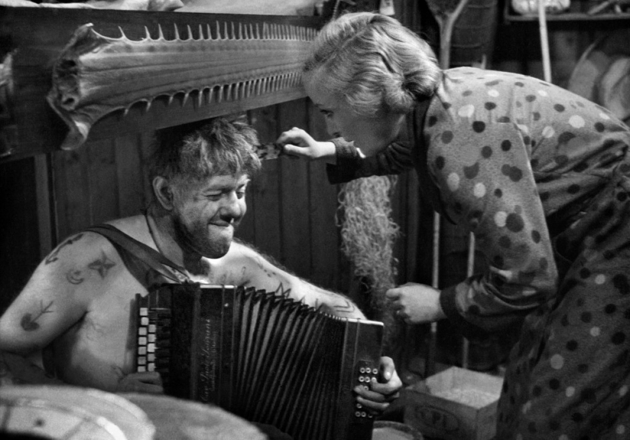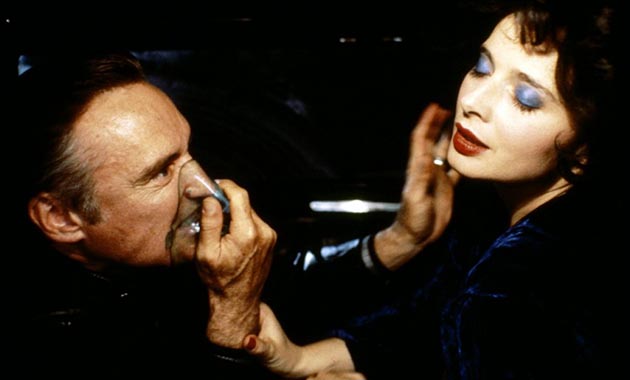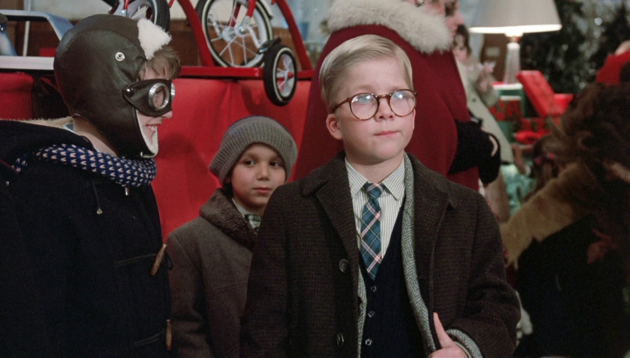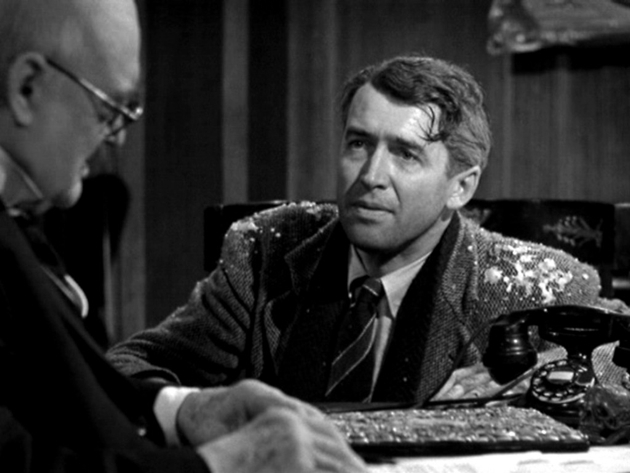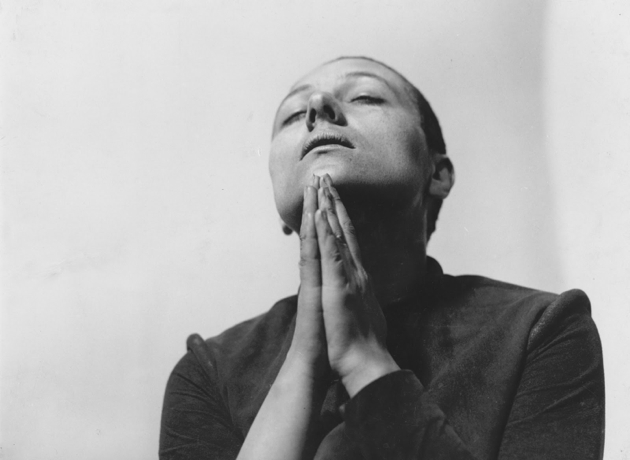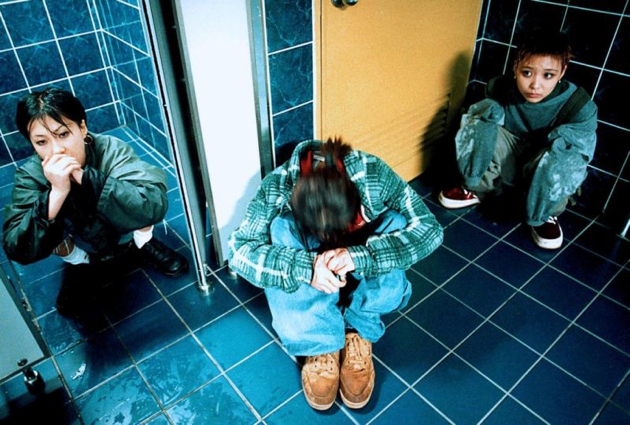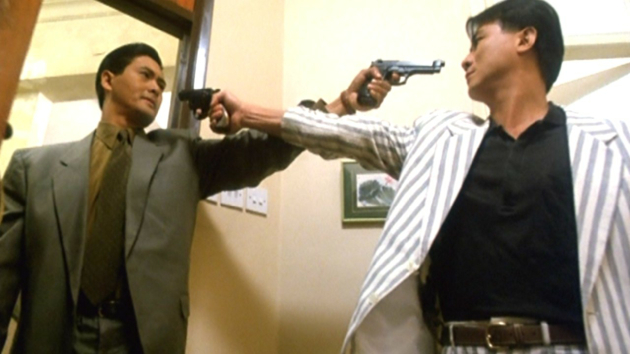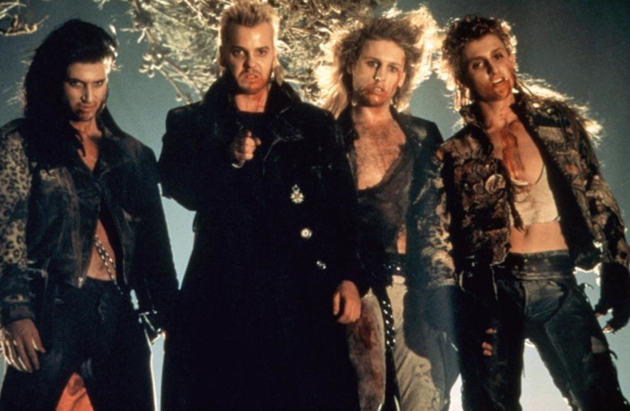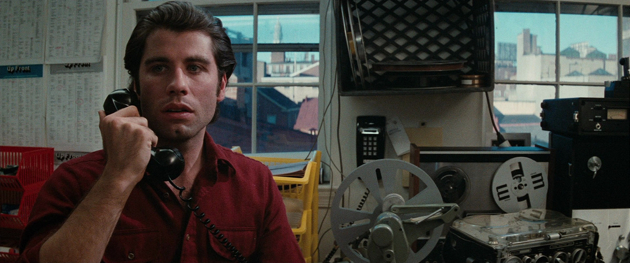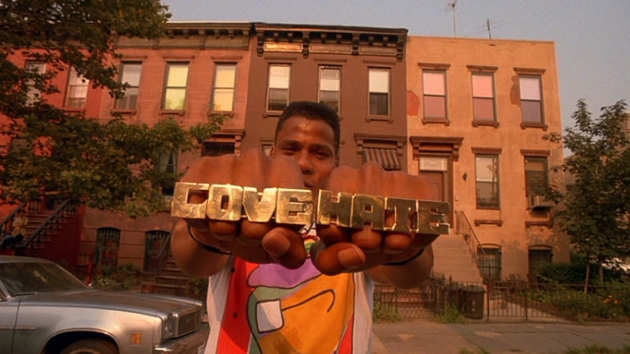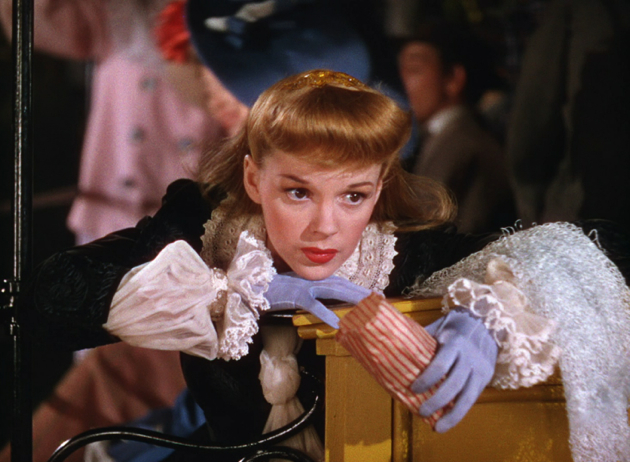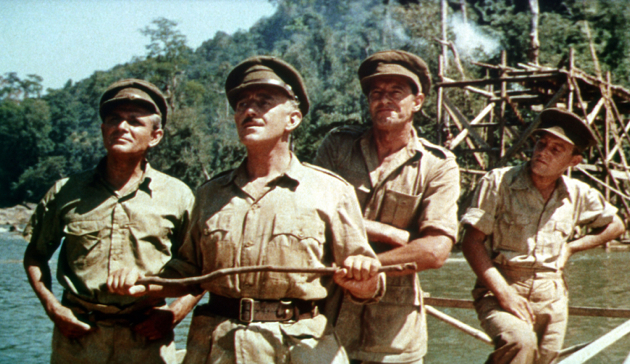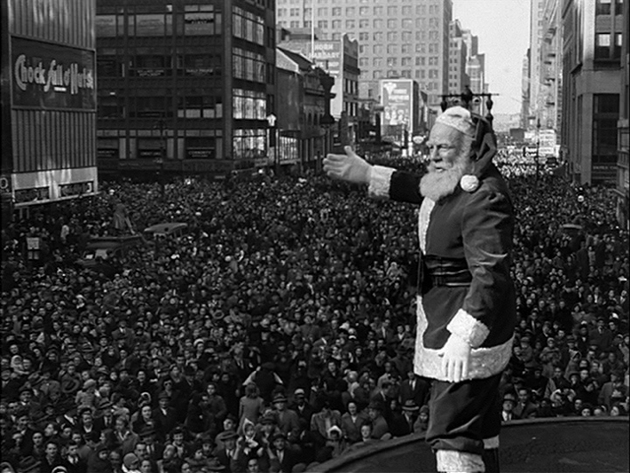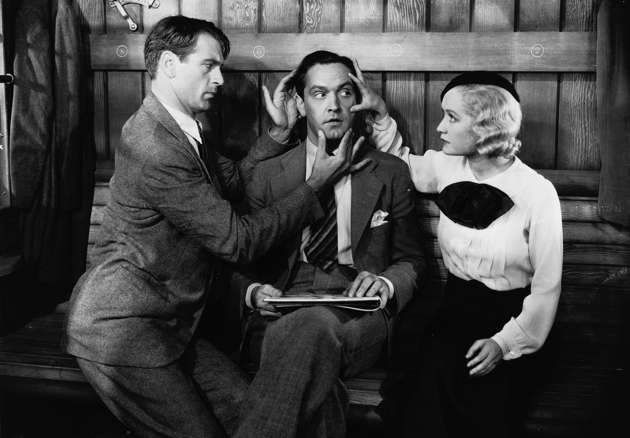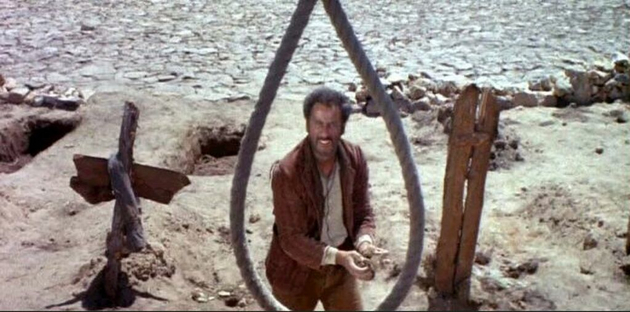Full Disclosure: ScreenAnarchy's List Of Shame - December
Peter Martin, Jim Tudor, Ryland Aldrich, Brian Clark, Ard Vijn, Christopher Bourne, Eric Ortiz Garcia, Ernesto Zelaya Miñano, James Dennis, Joshua Chaplinsky, Kurt Halfyard, Niels Matthijs, Patryk Czekaj, Pierce Conran and Shelagh Rowan-Legg
contributed to this story.

















L'Atalante (dir. Jean Vigo, 1934 France)
Peter Martin - Managing Editor
As I was about to watch Jean Vigo's L'Atalante, a film that is made more poignant by the knowledge that its creator, aged 29, died due to ill health before he could finish editing his feature-length debut, I learned that a friend, Cat Moore, far too young, had died due to ill health. Cat was a smart, sweet, kind woman, and, although we spent far too little time together, I felt a bond with her because of her strong convictions and love for movies.
Watching L'Atalante, I felt a similar kinship with Jean Vigo. I can only imagine the struggle he faced to get his film made despite his failing health, yet his very distinctive artistic convictions shine through. It is, to my mind, not a work of genius, but it is a work by a genius, someone who, in time, would have produced a true masterpiece (or two, or three). As it is, L'Atalante strikes me as too roughly assembled to be transcendent. Still, it's a beautiful movie, well-deserving of its classic status, a marvelous elixir of the prosaic and the poetic.
L'Atalante (dir. Jean Vigo, 1934 France)
Jim Tudor - Contributing writer
Jean Vigo – filmmaker, tragedy, enigma. Only three films - only one of them a feature - and still, an undisputed marvel in cinema history. François Truffaut adored his work, and made darn sure everyone knew it. Is it true that there'd be no French New Wave without Vigo? One thing's for sure, it would've been a lot less breezy, a lot less intimate.
Vigo died of tuberculosis at 29, and by much speculation, probably knew he would die young. Which makes the way his films so positively embrace life, in all its eccentricities and mundanities, all the more remarkable.
In L'Atalante, a headstrong French village girl, Juliette (Dita Parlo, wonderful), marries a ship captain (Jean Dasté), immediately setting off on his vessel (the L'Atalante) for her first trip to Paris. The subsequent journey is so full of filmmaking spark and charm that you barely notice that most of the film is confined to the ship. More accurately, Juliette is confined when her husband becomes jealous of her flirtatious nature. Eventually, defiantly, she hits Paris, and he becomes despondent, seeing her magical image underwater. They share a scene of bold 1934 French movie eroticism while separated before finally reuniting.
Sweet, unconventional, and perhaps indebted to Murnau's Sunrise, the film is a pre-Citizen Kane world cinema masterpiece-come-lately, as fast and loose as the New Wave it would inspire 25+ years later, but controlled and precise all the same. Vigo's camera placement is far ahead of its time, even if his point-of-view/screen direction matching is suspect and wonky some of the time. But then again, montage and untethered creativity in visuals are the name of the game.
Like Sunrise, it's fair to call L'Atalante one of the first great “date movies”, a satisfying enigma in itself.
Blue Velvet (dir. David Lynch, 1986 USA)
Nominated for the Academy Award for Best Director, Winner of the Independent Spirit Award for Best Actress, Winner of Best Film at the Sitges Film Festival
Ryland Aldrich - Festivals Editor
It's hard to believe 12 months have already passed. But 2013 has come and gone, and with it the final month of Full Disclosure and the third film in my "Favorite Auteurs" series. As I started watching Blue Velvet, it occurred to me that although I consider David Lynch to be one of my "favorite auteurs," other than the Twin Peaks TV series, I've actually only seen two of his feature films. But Lynch is just one of those artists whose work is so notable and so memorable, that even a small amount can make a huge impression. It's a crying shame that it took me so long to see this film - and just as shameful that there are plenty of other Lynch works I've yet to see. But then, that's why we made this series.
On the outside Blue Velvet is a pretty standard, if not a bit offbeat mystery noir. Kyle MacLachlan is perfect as the inquisitive would-be detective and Laura Dern the lovely underage object of his affection. I marveled a few times at how interactions between the pair were handled with perfectly subtle naturalism in a way that a lesser movie would have flubbed. But the star of the show is of course the brilliant performance by Dennis Hopper as the psychotic villain Frank Booth. It's a remarkable experience to realize an iconic film line is actually a nod to another film, which was exactly what happened to me when Booth yells "I'll fuck anything that moves!" (A refrain echoed eight years later by Jay in Kevin Smith's Clerks).
As tightly wound as the plot of Blue Velvet may be, I was waiting for the "Lynchian" plot twists to pop up anytime. I didn't think there was any chance that MacLachlan's Jeffrey Beaumont would live to see the credits role (or at least not with his sanity intact). But the head trip of the film is far more subtle than some of Lynch's later works. Here he employs symbolism and dramatic themes to work his magic. Some of it is simple (the metaphor of the bugs below the surface), while some more complex (the role of the multiple parents in Jeffery's relationship to Frank and Isabella Rossellini's Dorothy Vallens). But what's clear is that there is a lot here to unpack - perhaps too much for one viewing. The beauty, now that I've experienced it once, is that I can go back and watch it again whenever I want. Maybe 2014's Full Disclosure should be all about the films we are ashamed to have only seen once!
A Christmas Story (dir. Bob Clark, 1983 USA)
James Marsh - Asian Editor
If I'm completely honest, I'd never heard of Bob Clark's A Christmas Story before about five years ago, and I'm someone who has always celebrated Christmas and always spent this time of year indulging in festive films that highlight the holidays. Perhaps I'm generalising, but in my experience this film is nothing like as popular outside of the USA as it is in the rest of the world - or at least not in the cozy enclaves of South-East England, where I grew up.
Therefore, I came to A Christmas Story with no real shame and no expectations, but simply with the knowledge that it is a film revered by many of a certain age - and it's easy to see why. The film spills over with nostalgia, as it retells a specific personal Christmas memory many decades after the fact. Young Ralphie (Peter Billingsley) is fixated with acquiring a Red Ryder air rifle and goes to impossible lengths to alert his parents (Darren McGavin and Melinda Dillon) of the fact through a number of hair-brained schemes. In the meantime, he still has school to get through, friends and family to put up with, and the agonising wait until Christmas morning to endure.
More a series of sketches and vignettes than a rigid narrative, A Christmas Story is an incredibly well-observed, comedic look at the American nuclear family, as well as the uneasy relationship between commerce and the true meaning of Christmas, and children's intoxicating obsession with the acquisition of presents. It is easy to see why those who have lived with A Christmas Story since the early 80s, when they were Ralphie's age, hold his yuletide odyssey so dear, but it's a little late in the day for it to vie for a regular spot amongst my own Christmas movie favourites.
It's A Wonderful Life (dir. Frank Capra, 1946 USA)
Nominated for 5 Academy Awards including Best Picture, Best Director and Best Actor, Winner of the Golden Globe for Best Director
Brian Clark - European Editor
Wow. It's A Wonderful Life has been seen, discussed, parodied and quoted to such a point that that sitting down and watching the thing always seemed like an afterthought to me, but - wow. I'm in awe. What an amazing film.
I'm behind a very long line of critics and families everywhere with this sentiment, so I'll spare you the elaboration. If you don't believe me, ask your mom. But I do want to touch on two things that often get overlooked... probably washed away by tears of joy and gratitude.
First, while it is widely touted as a "feel good" film, 80% of It's A Wonderful Life is closer to "feel awful." Unlike most life-affirming movies, in which a protagonist in an initially terrible situation spends the entire running time working his/her way up towards a happy ending, George Bailey's story mostly consists of a man watching all of his dreams slip away or get crushed until finally he's contemplating suicide. But this drawn-out struggle is what makes the ending feel so damn good.
Second, Frank Capra is a master filmmaker. The swimming pool scene at the school dance alone is more cinematic and alive than most movies I saw this year, and Capra's sense of visual storytelling (probably perfected back in his days directing silent films) elevates the story and the emotions immeasurably throughout.
So, yes, you should go ahead and see It's A Wonderful Life if you haven't.
The Passion Of Joan Of Arc (dir. Carl Theodor Dreyer, 1928 Germany)
Ard Vijn - Contributing writer
The last film on my 2013 list of shame is Carl Th. Dreyer's The Passion of Joan of Arc, a black and white silent film from 1928. This is one of those films I've heard about, seen discussed by people, and generally mentioned to be the kind of classic any serious critic must have seen. It is just so much NOT my cup-of-tea that I needed this shame-list to move me towards actually watching it. Because the frequency of me thinking "Let's pop in a disc about a poor woman being tortured to death for 90 minutes" after a long working day is not high. And that's exactly what The Passion of Joan of Arc is about: no battles, no political speeches, just Joan's trial, torture and demise, captured mostly in teary close-ups.
Thankfully watching the movie itself isn't torture, despite my description above. Maria Falconetti captures the attention from her first second onward, her bulging, shining eyes showing more than a little insanity in them. She commands compassion for herself, and loathing towards the people doing all these things to her. But at the same time there is something scary about her, which shows us a glimpse of an utterly convinced religious fanatic. There are several other reasons why the film works, and many bits and pieces which are impressive. But they all pale into insignificance when compared to Falconetti's incredibly intense performance.
On a sidenote: despite the disc I saw it on having a choice of several soundtracks, silent is how Carl Th. Dreyer wanted the film to be seen, so with silence only is how I saw it. Probably the first time I saw a film in total silence, and quite a strange experience for a change.
Timeless Bottomless Bad Movie (dir. Jang Sun-woo, 1997 South Korea)
Winner of the NETPAC Award at the Pusan International Film Festival
Christopher Bourne - Contributing writer
Some of you may remember Kids, Larry Clark’s controversial 1995 film, which depicted teenagers indulging in very hedonistic activities, mostly of the sex and drugs variety. Far lesser known is Jang Sun-woo’s Timeless Bottomless Bad Movie, which arrived two years later, and could be described as Kids’ Korean counterpart. Released in the wake of the 1997 Asian financial crisis and Korea’s IMF-mandated economic reconstruction, Bad Movie goes much further than Kids in its explicitness and not just pushes the envelope, but blows it to smithereens.
Reveling in its own irresponsibility and disreputableness, this film fascinates, shocks, and horrifies in equal measure. It also defies categorization, combining documentary and fictional elements to the extent that it’s nearly impossible to tell which is which; highly experimental in its structure, Bad Movie is a self-reflexive and deliberately ruptured text. Jang employed actual street kids to reconstruct scenes based on their own life experiences. These scenes are mixed with the stories, and some documentary footage, of the homeless men who congregated in Seoul’s central train station. The result is a phantasmagoric collage of debauchery, one that embodies any parent’s worst nightmare of what kids these days are up to – drag racing, glue sniffing, joint smoking, street brawling, prostitution, gang rape, it’s all here.
Bad Movie employs a consciously unpretty aesthetic in its presentation, freely mixing multiple film formats – 35mm, 16mm and Hi-8 digital video – as well as animated sequences, all matching the ugliness of its milieu. Rarely have the mean streets of Seoul looked as grimy and depraved as they do here, in this vivid, visceral portrait of Korean society’s castoffs. Unsurprisingly, Bad Movie ran afoul of the censors, not only because of its content, but also for its complete lack of moral judgment of the behavior on display. The film was eventually released in a heavily censored cut that excised 20 minutes of its most extreme scenes. Many films claim to be shocking and dangerous; Timeless Bottomless Bad Movie is the rare real deal.
The Killer (dir. John Woo, 1989 Hong Kong)
Winner of 2 Hong Kong Film Awards including Best Director and Best Editing
Eric Ortiz Garcia - Contributing writer
Chow Yun Fat’s Ah Jong gets the details for his next job inside a church (yes, a church!) and, eventually the mission turns to be both successful and quite messy. Ah Jong is injured and accidentally shoots an innocent young woman, who loses her sight in consequence. After being cured inside the same church, Ah Jong saves the blind lady from a sexual assault and a relationship soon begins between them. All this happens during the first 10 or so minutes of John Woo’s The Killer! It is certainly a very intense action movie that doesn’t waste a damn second.
It took me more than five years to watch another Woo/Chow collaboration and here I found very exciting stuff from a cleverly structured plot. From the many Mexican standoffs (the one dealing with the lady’s blindness is fantastic), the coolness of Chow Yun Fat as a killer of many faces, to the surprising tone of friendship and kindness, The Killer stands out as a unique movie. Hell, the violent and merciless climax happens in the church! That sure speaks for itself, and it made me miss my high school days of playing Stranglehold on Xbox 360!
The Lost Boys (dir. Joel Schumacher, 1987 USA)
Ernesto Zelaya Minano - Contributing writer
At first, I was ready to write off The Lost Boys as just another dated relic from the 80s. The cheesy soundtrack, the slo-mo sex scene, Corey Haim’s horrendous shirts and “hip” lingo, Jason Patric’s goofy perm, the inexplicable popularity of the two Coreys – everything pointed to this being another cheesefest that gets a pass because of the nostalgia factor. Still, all my friends said I should see it, and I guess Christmas is as good a time as any to watch a movie about bloodsuckers.
Slowly, the film won me over. You have to love that gang of vampire greasers: Kiefer Sutherland being cool and badass, Bill S. Preston, Esq, some random blonde guy and one other guy I remember seeing in an episode of Tales From The Crypt back in the day. All lauded over by a head vampire whose identity is incredibly obvious from the moment he pops up.
And then there’s the wholesale vampire slaughter at the climax, where the film finally hits its stride and becomes an over-the-top effects showcase of blood, severed limbs and cheesy one-liners. “Death by stereo”, indeed; I was jumping in my seat at this point, and the final scene with Grandpa is pure gold.
Sure, the dialogue is corny, the Frog Brothers will probably annoy half the audience, and it’s all style over substance (this is one fast-paced film, which feels like it’s over before it’s begun), but it’s a heck of a lot of fun. Movie vampires back then at least had personality and tried to be threatening; nowadays, they’re mostly lovesick, mopey, glittering sissies. Near Dark kicks its ass in the "80s vampire gang recruits outsider” subgenre, but The Lost Boys is still a blast, and proof that there was a time, long ago, when Joel Schumacher actually made decent films.
Blow Out (dir. Brian De Palma, 1981 USA)
James Dennis - Contributing writer
I'm pretty familiar with late period De Palma, having grown up enthralled by the likes of Scarface (1983), The Untouchables (1987) and Carlito's Way (1993), but until recently I hadn't delved much further back. With the exception of The Fury (1978) and perhaps Carrie (1977), which I came to via a taste for horror, his more experimental flicks have eluded me. Having developed quite the reputation over the past couple of decades, Blow Out (1981) was first on my hitlist.
And it turns out that said reputation is well deserved. Deceptively complex, it's witty, tense, funny, scary, tragic and formally exhilarating. Trialing many of the visual and aural techniques that surfaced in his later, more commercial movies, I found it endlessly fascinating to watch. John Travolta manages to keep his omnipresent grin from getting in the way of a heartfelt performance and Nancy Allen is a revelation. Until now, she loomed large for me only as Robocop's bubble gum-chewing partner, Officer Lewis.
In many ways a picture about the movie-making process, there's a particular enjoyment to be had in De Palma's manipulation of that process. The opening POV, steadicam-enabled, slasher parody (for which Travolta's sound engineer is tasked with finding the appropriate scream) recalls Tobe Hooper's formidable Halloween-tribute opening to Funhouse (1981) in the same year. It's a reminder of just how pervasive that 'golden era' of the slasher genre was. Yet here it's just one element from a box of tricks in a film that miraculously pulls off the ultimate in genre hybridity with aplomb. Rarely do films live up to their reputations quite so consummately.
Do The Right Thing (dir. Spike Lee, 1989 USA)
Nominated for 2 Academy Awards includng Best Original Screenplay and Best Supporting Actor, Nominated for 4 Golden Globes including Best Motion Picture - Drama and Best Director
Joshua Chaplinsky - Contributing writer
I can't really explain why I'd never seen Do The Right Thing. It predates my interest in film as an art form, but coincided with my high school hip hop phase (House Party to Above the Rim, approximately. I had moved on to punk rock by the time the laughable Higher Learning was released). DTRT wasn't a thrilling gangland movie like Boyz N the Hood or Menace II Society, but as a co-opting Caucasian, I'm surprised I missed it. I've seen only a handful of Spike Lee films in the interim, and never much cared for him as a director, but I knew one day I'd have to take in his "masterpiece."
I think Lee's films are weighed down by the baggage of his public persona, but I tried going into DTRT with an open mind. It's very of a time and place, which had me waxing nostalgic. 13-year-old me would have eaten it up. 37 year-old me (eep!) recognized its flaws, but appreciated it for what it was: an operatic, Altman-esque cacophony of racial angst. I wouldn't go so far as calling Lee's characters stereotypes, but everything here is gleefully exaggerated. Oh, and Lee loves Dutch angles so much, you'd think he was from the Netherlands.
Still, I'm proud to finally scratch Do The Right Thing off my List of Shame. It's an enjoyable watch and an important American film. It makes you angry, it makes you sad, it makes you think. It also made me really want a slice of pizza. But $2 for extra cheese? That's just crazy.
Meet Me In St. Louis (dir. Vincente Minnelli, 1944 USA)
Nominated for 4 Academy Awards including Best Music and Best Screenplay
Kurt Halfyard - Contributing writer
While the film is a riot of costume and technicolor, the saccharine nature of Meet Me In St. Louis (like the maid’s cooking in the opening moments) is incompatible even with my rather broad cinematic tastes. In short, the whole thing is cloyingly twee and patently silly, even as pure holiday fantasy. The only exception here is young Margaret O’Brien who performs Under The Bamboo Tree like a champ and later raises some hell on Halloween. That the standout scene, with its blowing winds and towering bonfires and a mob of anonymous children in face-paint and shadow plotting vandalism, exists, seemingly, only to advance one of the films romantic plots makes the whole enterprise all the more exasperating. By the time she decapitates the family snow-doppelgängers in the back yard to make her out-of-the-loop, emasculated, father reverse the decision to move the family to New York, well, I had even had it with her.
The breathy romances of the older sisters (Judy Garland and Lucielle Bremner) and their convoluted histrionics regarding their clueless expectations of their marriages only bring out the worst - to these eyes - of an innocent but callow America in love with its entitlements and domestic frippery, and by extension the worst kind of escapism. This beloved but curiously meandering musical pretty much lost me at hello. As with Arsenic And Old Lace earlier this year, I simply do not understand why people are so endeared by this kind of eager-to-please cheese. Give me Wilder, Lubitsch or Sturges over this tripe.
The Bridge on the River Kwai (dir. David Lean, 1957 UK/USA)
Winner of 7 Academy Awards including Best Picture, Best Director and Best Actor, Winner of 4 BAFTAs and 3 Golden Globes
Niels Matthijs - Contributing writer
I have to say, I was actually looking forward to watching The Bridge On The River Kwai. I visited the railroad two years ago and it was one of the highlights of my trip to Thailand. But I was pretty disappointed when I didn't recognize too much of it during the film. Technicolor doesn't do much justice to the sprawling greens of the Thai landscape and the film is more interested in serving up some adventure story than it is with the history of the bridge.
If you like to complain about American patriotism in modern Hollywood films, don't even sit down for this one. The entire first part is about British soldiers teaching the Japanese how to build a bridge. Pretty hilarious by modern standards and easily the worst part of the film. Once the second part starts things become a little sillier and it's easier to accept the simple adventure story that starts around halfway.
The second part isn't too bad, but there wasn't much to hook my attention, especially since the start of the film left me completely cold. The finale was nice enough, but I just didn't feel it I'm afraid. I'd rather pick up my old vacation photos.
Miracle On 34th Street (dir. George Seaton, 1947 USA)
Winner of 3 Academy Awards including Best Supporting Actor and Best Screenplay, Winner of 2 Golden Globes
Patryk Czekaj - Contributing writer
To be perfectly honest, I’ve never been a huge fan of Christmas films. Whether forcibly or not, over the course of years I’ve probably watched most of them, but there are only a few that really stayed with me. Don’t get me wrong, I love Christmas, I just think that playing the same films over and over again every year makes the whole affair ultimately wearisome and undermines the importance of the so-called holiday spirit.
I must say that I sat down to watch Miracle On 34th Street with some reluctance. Although I knew that this is one of the most beloved Christmas pictures, I wasn’t very excited about a story of a man who envisions himself as the one and only Santa Claus. How wrong I was. At first, I only wanted to like it, but after 96 minutes I ended up loving it wholeheartedly. If there’s one thing I’m extremely happy about after watching Miracle On 34th Street, it’s that the picture actually made me reconsider all my previous superstitions surrounding this particular film category.
Miracle On 34th Street is all about the power of imagination. I honestly think that due to its gloriously heartwarming and pleasurable aura it will make even the biggest skeptics believe, maybe not in Santa, but in the true meaning of the holiday spirit. It’s a film that possesses an enormous ability to evoke all the positive and wonderful emotions related to this magical Christmas time. It doesn’t really matter if Kris Kringle (the marvelous Edmund Gwenn) is the real Santa, what’s important is that his sudden appearance brings so much joy and warmth into the lives of many people. Like Doris, after meeting Kris I’ve become a completely different person, and I’m sure everyone else will too. Merry Christmas!
Design For Living (dir. Ernst Lubitsch, USA)
Pierce Conran - Contributing writer
As a big fan of classic screwball comedy and Ernst Lubitsch, 1933’s Design for Living seemed like a no-brainer for me. Yet, as I’ve delved deeper into Asian films and tried to keep up with the perpetual wave of new releases, it has languished in my collection unwatched. On a whim I finally turned it on the other day and within moments I was sucked in. The film puts its best foot forward, opening with the breathless banter between leads Gary Cooper, Fredric March and Miriam Hopkins, which comes from Noel Coward’s original script.
Concerning a light-hearted love triangle between a tomboyish high society girl and two struggling artists, the story is a bit thin yet that never poses a serious obstacle as the genial interplay between the central triumvirate is more than enough to keep things purring along. However, as much as I enjoyed Design For Living, I don’t think it will stay with me the way other classic screwballs have, not to mention other Lubitsch works such as Trouble In Paradise (1932) and Ninotchka (1939). But it has whetted my appetite once more for these classic comedies that have so delighted me in the past, so I’ll be sure to dip in again before long.
The Good, The Bad And The Ugly (dir. Sergio Leone, 1966 Italy)
Shelagh M. Rowan-Legg - Contributing writer
The spaghetti western gets political. Or at least that's how it seemed for much of this, my final Full Disclosure film. The Good, The Bad And The Ugly feels rather atypical of the subgenre; the coolness, the isolated man or few men, the longing for gold and/or revenge, those are all still there. But thrown in are a lot of scenes with large armies fighting, and while the story doesn't delve too deeply into the subject of the American Civil War, it definitely seems to be making a strong comment on the futility of war. Neither the Union nor the Confederacy looks good in this; I don't know if Sergio Leone and Luciano Vincenzoni were attempting to make a political statement about American history, but the battle scenes rival anything I've seen in an American historical drama. Eli Wallach running through the cemetery is at once humourous and devastating, considering the number of graves and the battle scene just witnessed.
I can certainly see why it has gained a reputation as the best spaghetti western. While the story might be little more than a constant back and forth of who is going to kill whom for some gold, it's kept interesting mainly by the performances (and yes, Eli Wallach completely upstages Clint Eastwood) and some clever scenes (such as Wallach in the bathtub). Visually, it's as stunning as the previous Leone films, and the score just as good; it was nothing unexpected for me. What was unexpected, and what will make this maybe the first spaghetti western that I want to watch again, was the story and performances, laden with so much more than the frivolity of the previous films. I guess when it comes to westerns, I like a little bit of substance with the style.

More about Lists of Shame 2013
Around the Internet
Recent Posts
Leading Voices in Global Cinema
- Peter Martin, Dallas, Texas
- Managing Editor
- Andrew Mack, Toronto, Canada
- Editor, News
- Ard Vijn, Rotterdam, The Netherlands
- Editor, Europe
- Benjamin Umstead, Los Angeles, California
- Editor, U.S.
- J Hurtado, Dallas, Texas
- Editor, U.S.
- James Marsh, Hong Kong, China
- Editor, Asia
- Michele "Izzy" Galgana, New England
- Editor, U.S.
- Ryland Aldrich, Los Angeles, California
- Editor, Festivals
- Shelagh Rowan-Legg
- Editor, Canada



